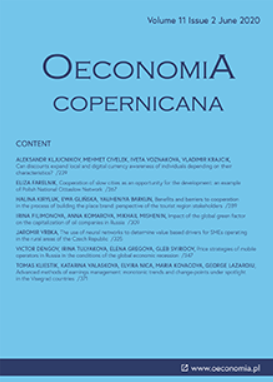Comparison of factors influencing liquidity of European Islamic and conventional banks
Comparison of factors influencing liquidity of European Islamic and conventional banks
Author(s): Hussam Musa, Zdenka Musová, Viacheslav Natorin, George Lăzăroiu, Martin BoďaSubject(s): Business Economy / Management, Islam studies, Economic policy
Published by: Instytut Badań Gospodarczych
Keywords: Keywords: Islamic banks; conventional banks; capital; liquidity; efficiency;
Summary/Abstract: Research background: The innovation in Sharīʻah compliant banking products has resulted in the rapidly increasing size of assets in Islamic banks worldwide. The assets of such banks have been growing twice as fast as those of conventional banks. Islamic banks do not depend on conventional interest, speculation, or complex derivatives stemming from banking operations. Instead, their actions in respect of profit/risk sharing, and the clarity of the contract are consistent with Islamic Sharīʻah principles, which seek to promote a more equal society. Purpose of the article: This research aims to identify and compare factors influencing the liquidity of Islamic and conventional banks in Europe. Candidate factors are sought amongst profitability, credit quality, credit expansion and capital adequacy indicators. Methodology: First, relevant financial ratios for 249 observations on Islamic banks and 2,306 observations on conventional banks are selected and compared for the period 2013–2017. Second, liquidity is explained separately for each type of banks by panel data regression to identify its determinants in a comparative context. Findings & value added: The results indicate that the impact of the net interest margin on the liquidity ratio of Islamic banks is insignificant, which is obviously due to the prohibition of the use of interest (riba). To the contrary, in conventional banking a higher net interest margin results in a reduction in liquidity. Capital adequacy has a positive influence upon liquidity in both types of banks, but in Islamic banking, the influence is 5.4 times greater. The findings strongly suggest that the liquidity of Islamic and conventional banks is affected by different factors.
Journal: Oeconomia Copernicana
- Issue Year: 12/2021
- Issue No: 2
- Page Range: 375-398
- Page Count: 24
- Language: English

